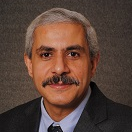Structure from Motion (SfM) Photogrammetry for Geomatics and Geoscience Applications
A special issue of Remote Sensing (ISSN 2072-4292). This special issue belongs to the section "Remote Sensing Image Processing".
Deadline for manuscript submissions: closed (31 January 2020) | Viewed by 100747
Special Issue Editors
Interests: geomatics; mobile mapping; laser scanning; photogrammetry; remote sensing; navigation; unmanned aerial vehicles; cultural heritage; GIS
Special Issues, Collections and Topics in MDPI journals
Interests: geomatics; mobile mapping; laser scanning; photogrammetry; remote sensing; navigation; data processing; machine learning; unmanned aerial vehicles; cultural heritage
Special Issues, Collections and Topics in MDPI journals
Interests: photogrammetry; laser scanning; mobile mapping systems; system calibration; computer vision; unmanned aerial mapping systems; multisensor/multiplatform data integration
Special Issues, Collections and Topics in MDPI journals
Special Issue Information
Dear Colleagues,
Nowadays, a large number of applications require reliable geometric information about objects and the environment. The most commonly-used techniques for obtaining such 3D information without contact with the objects are usually LiDAR (Light Detection And Ranging) and photogrammetry. Despite both these techniques are widely used, and sometimes integrated together, two key factors are motivating the recent fast increase of photogrammetry usage: the availability of low cost cameras, which can easily mounted on UAVs (Unmanned Aerial Vehicles) and are commonly embedded in smartphones or other mobile devices, and to the recent introduction of almost automated software, typically based on the Structure from Motion approach, for easily obtaining tridimensional information from images.
The aim of this Special Issue is that of presenting new research advancements on methodological and algorithmic aspects on photogrammetry and Structure from Motion, on the integration of photogrammetric reconstruction with other systems, on the processing and analysis of image-based tridimensional data, and on the use of photogrammetry in applications related in particular to geomatics, geosciences, and related fields, such as surveying, mobile mapping, hydrology, geomorphology, civil engineering, architecture, cultural heritage, and precision farming.
Dr. Antonio Vettore
Dr. Andrea Masiero
Prof. Dr. Ayman F. Habib
Guest Editors
Manuscript Submission Information
Manuscripts should be submitted online at www.mdpi.com by registering and logging in to this website. Once you are registered, click here to go to the submission form. Manuscripts can be submitted until the deadline. All submissions that pass pre-check are peer-reviewed. Accepted papers will be published continuously in the journal (as soon as accepted) and will be listed together on the special issue website. Research articles, review articles as well as short communications are invited. For planned papers, a title and short abstract (about 100 words) can be sent to the Editorial Office for announcement on this website.
Submitted manuscripts should not have been published previously, nor be under consideration for publication elsewhere (except conference proceedings papers). All manuscripts are thoroughly refereed through a single-blind peer-review process. A guide for authors and other relevant information for submission of manuscripts is available on the Instructions for Authors page. Remote Sensing is an international peer-reviewed open access semimonthly journal published by MDPI.
Please visit the Instructions for Authors page before submitting a manuscript. The Article Processing Charge (APC) for publication in this open access journal is 2700 CHF (Swiss Francs). Submitted papers should be well formatted and use good English. Authors may use MDPI's English editing service prior to publication or during author revisions.
Keywords
- Photogrammetry
- Structure from Motion
- Geoscience
- Geomatics
- UAV
- 3D data processing
- Mobile mapping
- DTM
- Remote Sensing
- GIS







